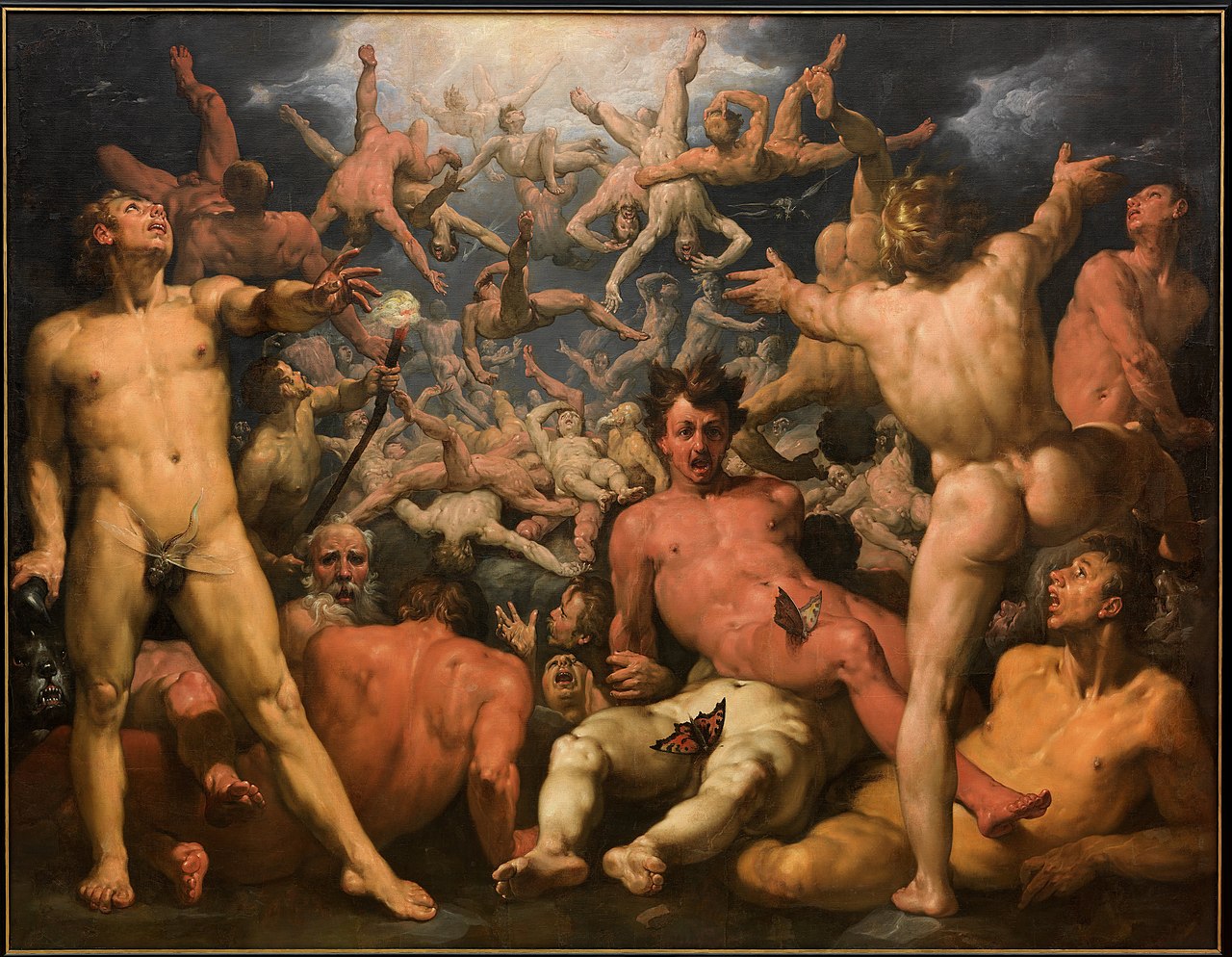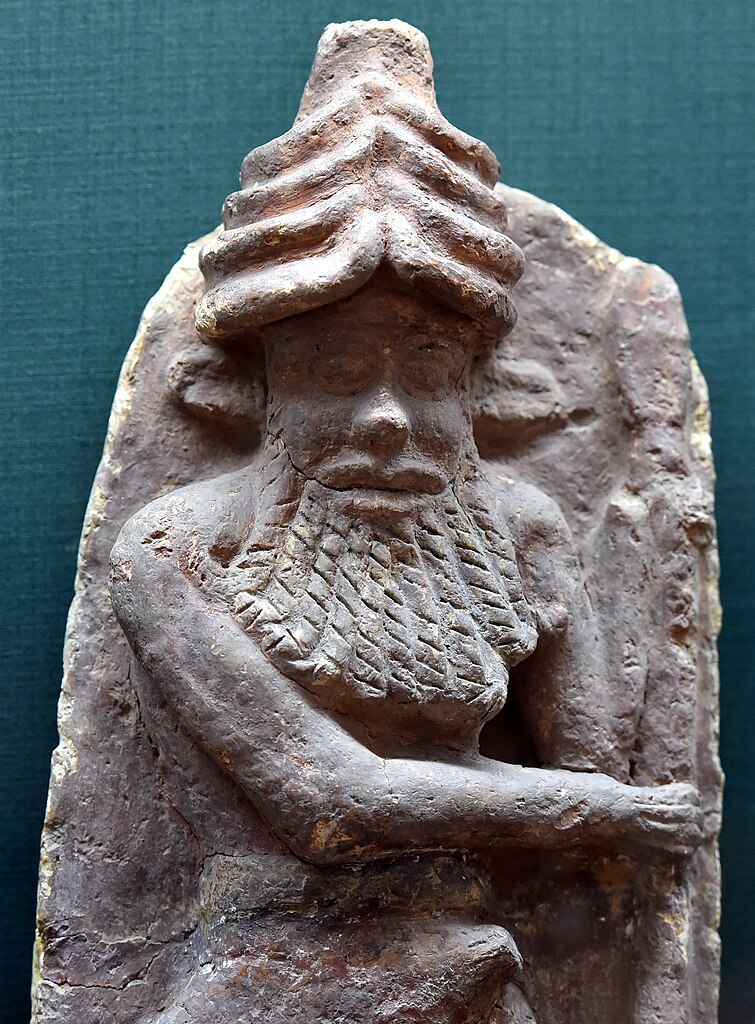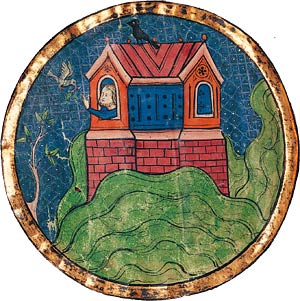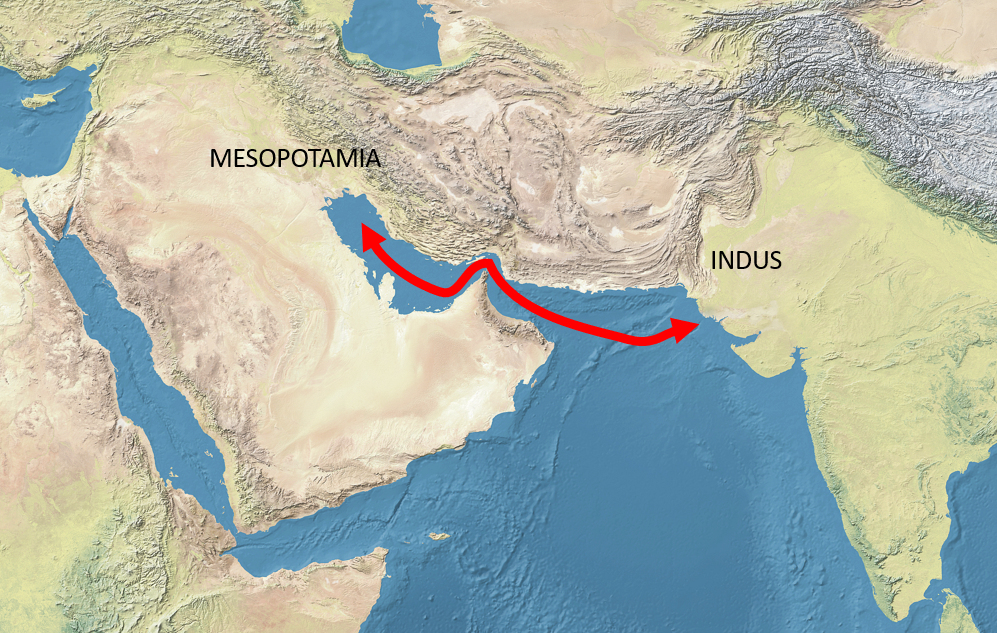The influence of Mesopotamian religions and culture on neighboring civilizations
Mesopotamia, often regarded as the cradle of civilization, was the birthplace of many foundational developments in human history, including urbanization, writing, and complex religious systems. Its religious and cultural influence radiated outward, shaping neighboring civilizations and extending its legacy across millennia. The transmission of Mesopotamian ideas into Greek, Egyptian, Jewish, and Indian traditions exemplifies the interconnectedness of ancient cultures and highlights the processes of adaptation, synthesis, and transformation that characterize the evolution of religious and cultural systems.
 Empires in Mesopotamia and the Egyptian New Kingdom in the 15th century BCE, indicating the tight connections between the different civilizations in the ancient Near East. Source: Wikimedia Commonsꜛ (license: CC BY-SA 3.0)
Empires in Mesopotamia and the Egyptian New Kingdom in the 15th century BCE, indicating the tight connections between the different civilizations in the ancient Near East. Source: Wikimedia Commonsꜛ (license: CC BY-SA 3.0)
Influence on Greek culture and religion
Mesopotamian influence on Greek culture emerged primarily through intermediaries such as the Hittites, Phoenicians, and later Persian interactions. By the first millennium BCE, the cultural exchange between the Near East and the Aegean world was extensive, facilitated by trade, migration, and conquest.
Mesopotamian mythology and cosmology left their mark on Greek narratives, particularly in the epics of Hesiod and Homer. Themes of divine hierarchy and cosmic struggle in texts such as the Enuma Elish resonate with Hesiod’s Theogony, which details the genealogy and conflicts of the Greek gods. The motif of a younger god overthrowing an older generation — seen in Marduk’s defeat of Tiamat and Zeus’s victory over the Titans — suggests shared mythological structures adapted to local contexts.

The Fall of the Titans, Cornelis van Haarlem, 1550. In Greek mythology, the Titans were members of the second generation of divine beings, descending from the primordial deities and preceding the Olympians. Greeks of the classical age knew of several poems about the war between the gods and many of the Titans. The dominant one, and the only one that has survived, is the Theogony attributed to Hesiod. Source: Wikimedia Commonsꜛ (license: public domain)
The Mesopotamian tradition of astrological divination also profoundly influenced Greek thought. Babylonians developed systematic observations of celestial movements, correlating these with terrestrial events. These practices, transmitted via the Hellenistic world, became integral to Greek astrology and astronomy, laying the groundwork for later Western traditions.
Furthermore, Mesopotamian administrative innovations, including standardized weights and measures and legal codes such as the Code of Hammurabi, indirectly influenced Greek governance through their adoption and adaptation in the Achaemenid Empire, which later encountered the Greek world.
Influence on Egyptian culture and religion
Egypt and Mesopotamia, though distinct in their cultural and religious identities, shared a long history of interaction. Trade, warfare, and diplomacy during the third and second millennia BCE facilitated an exchange of ideas, particularly in areas such as writing, governance, and religious iconography.
Mesopotamian cuneiform likely influenced the development of Egyptian hieroglyphic writing, as both civilizations sought to codify language for administrative and ritual purposes. The Mesopotamian concept of kingship as a divine mandate found resonance in Egyptian notions of pharaonic rule, with both traditions emphasizing the ruler as a mediator between the gods and humanity.
Religious syncretism can also be observed, particularly in the worship of deities associated with fertility, creation, and the afterlife. The Mesopotamian goddess Ishtar (Inanna)shares attributes with the Egyptian Isis and Hathor, reflecting common themes of motherhood, love, and cosmic power. Additionally, the use of ziggurats in Mesopotamia and pyramids in Egypt highlights parallel architectural expressions of sacred cosmology, where monumental structures symbolized the connection between heaven and earth.


Top: Anu ziggurat and White Temple at Uruk. The original pyramidal structure, the ‘Anu Ziggurat’, dates to around 4000 BCE, and the White Temple was built on top of it c. 3500 BCE. The design of the ziggurat was probably a precursor to that of the Egyptian pyramids, the earliest of which dates to c. 2600 BC. Top source: Wikimedia Commonsꜛ (license: CC BY-SA 2.0); Bottom source: Wikimedia Commonsꜛ (license: public domain) – Bottom: The Great Sphinx and the Pyramids of Giza, built during the Old Kingdom. Source: Wikimedia Commonsꜛ (license: CC BY-SA 3.0)
Influence on Jewish culture and religion
The Jewish religious tradition, emerging in the ancient Levant, absorbed significant influences from Mesopotamian culture, particularly during periods of close contact, such as the Babylonian Exile in the 6th century BCE. This period of exile exposed the Jewish elite to Babylonian religious, literary, and legal traditions, many of which left a lasting imprint on the Hebrew Bible and Jewish theology.

Approximate location of the Levant. Source: Wikimedia Commonsꜛ (license: CC BY-SA 3.0)
The narrative parallels between the Mesopotamian [Epic of Gilgamesh] and the biblical account of Noah’s flood are among the most notable examples of Mesopotamian influence. Both texts describe a divine decision to destroy humanity, the preservation of life through a hero’s ark, and the eventual renewal of the earth. These shared elements suggest a transmission of Mesopotamian flood mythology into Jewish oral and written traditions.


Left: Terracotta wall panel depicting Enkidu, Gilgamesh’s friend. He wears a horned helmet and his lower body is bull-like (not shown here). From Ur, Iraq. 2027-1763 BCE. Source: Wikimedia Commonsꜛ (license: CC BY-SA 3.0) – Right: A Jewish depiction of Noah, depicting Noah’s ark landing on the ‘mountains of Ararat’. Source: Wikimedia Commonsꜛ (license: public domain)
Cosmological concepts in the Hebrew Bible, such as the creation story in Genesis, also bear traces of Mesopotamian influence. The depiction of Yahweh bringing order to chaos echoes the struggle between Marduk and Tiamat in the Enuma Elish. Similarly, the concept of divine kingship, although adapted to fit the monotheistic framework of Israelite religion, parallels Mesopotamian views of the ruler as a representative of divine authority.
Legal traditions in the Torah, such as the Covenant Code, reflect similarities to Mesopotamian law codes, including the Code of Hammurabi, particularly in their formulations of justice and social regulation.
Influence on Indian culture and religion
The relationship between Mesopotamia and ancient India was mediated through trade and cultural exchange across the Persian Gulf and overland routes. By the third millennium BCE, the Indus Valley Civilization engaged in extensive trade with Mesopotamia, as evidenced by the discovery of Harappan seals in Mesopotamian cities and Mesopotamian artifacts in the Indus Valley.

Trade routes between Mesopotamia and the Indus would have been significantly shorter due to lower sea levels in the 3rd millennium BCE. Source: Wikimedia Commonsꜛ (license: CC BY-SA 3.0)
While the religious and cultural systems of Mesopotamia and India developed largely independently, certain parallels and influences are discernible, particularly in cosmology and ritual practices. The shared Indo-European heritage of the Vedic religion and Mesopotamian traditions is reflected in linguistic and thematic similarities. For instance, the Vedic rita (cosmic order) bears conceptual resemblance to Mesopotamian me, the divine decrees that sustain the cosmos.
Astrology and divination, central to Mesopotamian religious practice, also found their way into Indian tradition. The systematic observation of celestial bodies and their influence on human affairs became integral to Indian astrology, likely facilitated through Persian intermediaries during the Achaemenid Empire.
Moreover, Mesopotamian influence on the material culture of the Indus Valley — such as weights and measures, urban planning, and trade practices — laid the groundwork for subsequent developments in Indian civilization, providing an indirect but significant legacy.
Conclusion
The influence of Mesopotamian religions and culture on Greek, Egyptian, Jewish, and Indian traditions underscores the interconnectedness of ancient civilizations. Mesopotamian cosmology, mythology, administrative practices, and intellectual innovations served as a foundation upon which these diverse cultures built their distinct identities. While each tradition adapted Mesopotamian elements to fit its unique context, the shared heritage of ideas and practices highlights the central role of Mesopotamia as a cultural and intellectual hub in the ancient world.
References and further reading
- Bottéro, J., Mesopotamia: Writing, Reasoning, and the Gods, 1995, University of Chicago Press, ISBN: 978-0226067278
- Black, J., & Green, A., Gods, demons, and symbols of ancient Mesopotamia: an illustrated dictionary, 1992, British Museum Press, ISBN: 978-0714117058
- Gwendolyn Leick, Mesopotamia - The invention of the city, 2001, Allan Lane, ISBN: 9780713991987
- West, M. L., The east face of Helicon: West Asiatic elements in Greek poetry and myth, 1999, Oxford University Press, ISBN: 978-0198152217
- Dalley, S., Myths from Mesopotamia: Creation, the Flood, Gilgamesh, and Others, 2009, Oxford University Press, ISBN: 978-0199538362






























comments